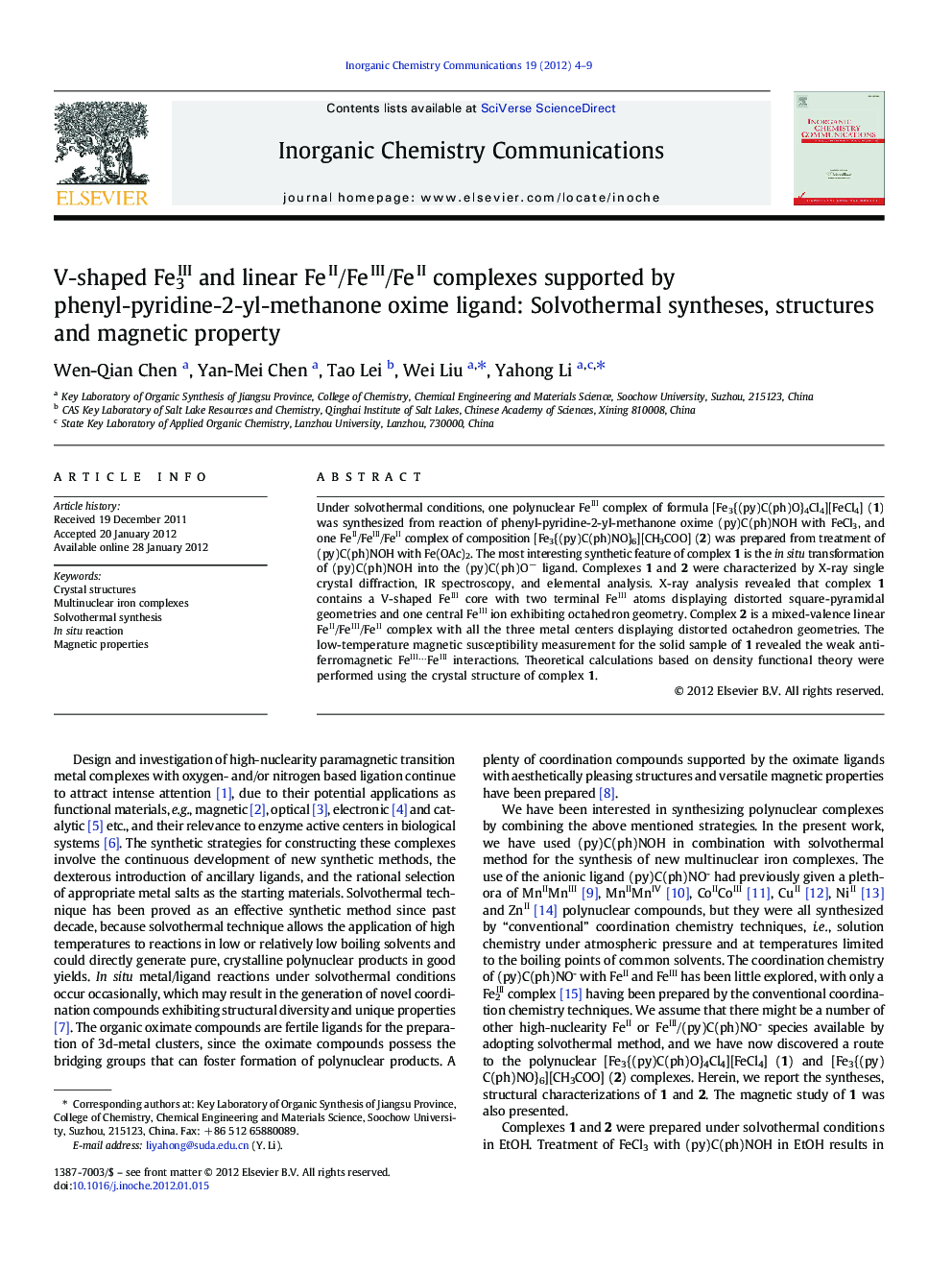| Article ID | Journal | Published Year | Pages | File Type |
|---|---|---|---|---|
| 1302389 | Inorganic Chemistry Communications | 2012 | 6 Pages |
Under solvothermal conditions, one polynuclear FeIII complex of formula [Fe3{(py)C(ph)O}4Cl4][FeCl4] (1) was synthesized from reaction of phenyl-pyridine-2-yl-methanone oxime (py)C(ph)NOH with FeCl3, and one FeII/FeIII/FeII complex of composition [Fe3{(py)C(ph)NO}6][CH3COO] (2) was prepared from treatment of (py)C(ph)NOH with Fe(OAc)2. The most interesting synthetic feature of complex 1 is the in situ transformation of (py)C(ph)NOH into the (py)C(ph)O− ligand. Complexes 1 and 2 were characterized by X-ray single crystal diffraction, IR spectroscopy, and elemental analysis. X-ray analysis revealed that complex 1 contains a V-shaped FeIII core with two terminal FeIII atoms displaying distorted square-pyramidal geometries and one central FeIII ion exhibiting octahedron geometry. Complex 2 is a mixed-valence linear FeII/FeIII/FeII complex with all the three metal centers displaying distorted octahedron geometries. The low-temperature magnetic susceptibility measurement for the solid sample of 1 revealed the weak antiferromagnetic FeIII…FeIII interactions. Theoretical calculations based on density functional theory were performed using the crystal structure of complex 1.
Graphical abstractTwo trinuclear complexes of formulas [Fe3{(py)C(ph)O}4Cl4][FeCl4] (1) and [Fe3{(py)C(ph)NO}6][CH3COO] (2) were prepared and characterized. Magnetic studies of 1 revealed the weak antiferromagnetic FeIII…FeIII interactions.Figure optionsDownload full-size imageDownload as PowerPoint slideHighlights► Two trinuclear Fe3 complexes have been prepared and characterized. ► The in situ ligand transformation was determined. ► Magnetic studies indicated antiferromagnetic behavior for complex 1.
